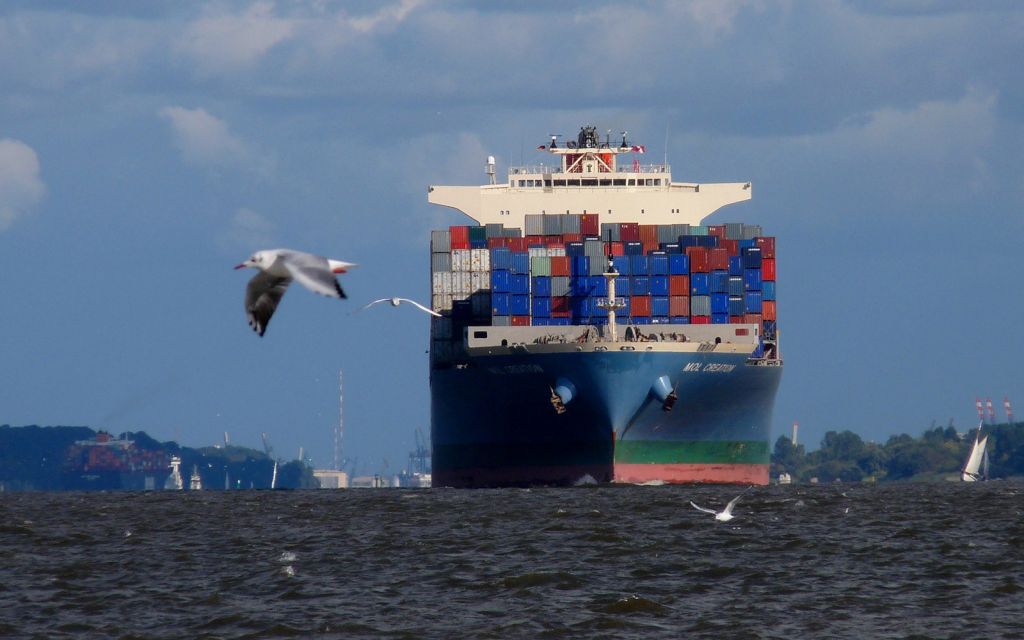On September 2, COSCO SHIPPING Holdings issued an announcement stating that it would order 10 container ships with a single-ship capacity of 16000 TEU.
According to the announcement, the price of each container ship is US$157.58 million (equivalent to RMB 1.01923 billion), and the total price of 10 ships is US$1.5758 billion (equivalent to RMB 10.1923 billion). The expected delivery time is between the first quarter of 2025 and the fourth quarter of 2025.
10 subsidiary single-ship companies of its holding subsidiary Orient Overseas had signed shipbuilding agreements with Nantong COSCO Kawasaki and Dalian COSCO Kawasaki. According to the agreement, Nantong COSCO Kawasaki's expected delivery time is between the first quarter of 2025 and the fourth quarter of 2025, and Dalian COSCO Kawasaki's expected delivery time is between the fourth quarter of 2024 and the fourth quarter of 2025.
COSCO SHIPPING Holdings stated that the increase in the number of its own ships through this transaction will be in line with the long-term strategic development and growth plans of OOCL and its subsidiaries, so as to meet the future market demand. OOCL and its subsidiaries can also benefit from the optimization of the fleet structure and reduce reliance on the ship leasing market.
COSCO SHIPPING Holdings also pointed out that the new ships under this deal will increase the average container space. According to economic reasons, the container space of each ship will be increased and the cost of each container will be reduced, so as to enhance the operating cost competitiveness of OOCL and its subsidiaries.
Profit of 5.7 billion dollars in the first half of the year
Not long ago, COSCO Shipping Holdings disclosed its semi-annual report. In the first half of the year, the company achieved revenue of 21.5 billion dollars and net profit of 5.7 billion dollars, a year-on-year increase of 88.06% and 3162.31%. In the first half of the year, the company's container shipping business revenue reached 136.438 billion yuan, a year-on-year increase of 90.59%, and the terminal business segment revenue reached 3.717 billion yuan, a year-on-year increase of 15.28%.
In 2021, the global logistics supply chain was challenged and impacted by multiple factors such as port congestion, container shortages, and inland transportation delays. The container shipping market has tightened supply and demand, and the freight rates of major routes are facing upward pressure. In the first half of the year, the average China Export Container Freight Index (CCFI) was 2066.64 points, an increase of 133.86% compared with the same period of the previous year, and an increase of 92.44% compared with the second half of 2020.
Tianfeng Securities believes that the chaos in the global supply chain in the first half of the year will continue, and the company’s shipping business volume and prices will rise. Looking forward to the third quarter, the ocean freight is still in the process of rising, and the superimposed peak season is coming. As of August 27, SCFI ( The Shanghai Export Container Freight Index) has risen to the level of 4385.62. There is reason to believe that China Shipping Holdings' third-quarter performance will be stronger.
The brokerage also mentioned that the current round of global supply chain disorder is mainly reflected in the lack of containers and the lack of container vessels. In terms of containers, in the first half of the year, COSCO SHIPPING Holdings adopted measures such as strengthening empty container transportation, improving container turnover efficiency, and introducing new containers to the market, which effectively alleviated the problem of customers’ containers. The number of containers increased by 7.2% compared with the end of 2020; in terms of transportation capacity, the company invested in transportation capacity. An increase of 3.7% over the same period last year, of which the capacity of trans-Pacific routes and Asia-Europe routes increased year-on-year by 12% and 13% respectively.
 English
English Русский
Русский 中文
中文
